Best video editing PCs of 2024
Find the best video editing PC for high-performance post-production

1. Quick List
2. FAQs
3. How to choose
4. How we test
5. Top picks
▶ Best overall
▶ Best budget
▶ Best Windows
▶ Best iMac alternative
▶ Best for pros
▶ Best custom-built
The best video editing PCs streamline the post-production workflow for anything from feature films to YouTube videos, requiring robust hardware to handle demanding editing software without performance hitches.
A quality video editing PC, whether a robust workstation or a more familiar all-in-one, should sport substantial processing power like an Intel Core i9, AMD Ryzen 9, or Apple M2 Pro. Fortunately, our top pick, the Mac Studio can even pack in an M2 Ultra, which is by far the most capable video editing chip you can get. On the more affordable side, the Apple Mac mini with M2 Pro and large enough memory pool can serve as a more than capable video editing PC on a budget, and a compact desktop alternative to many of the best video editing laptops we've tried.
After rigorously testing and comparing hundreds of laptops and PCs—evaluating their specs, performance, build quality, and value—we've pinpointed the most powerful, budget-friendly, and efficient machines suited for handling even your most intense video editing projects.
Quick List
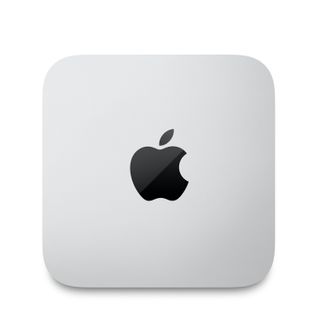
The Apple Mac Studio, with its M2 Max or M2 Ultra chips, is a compact yet powerful desktop PC ideal for video editing, boasting speeds up to 4x faster than the last Intel iMac, enhancing workflow efficiency for creative professionals.
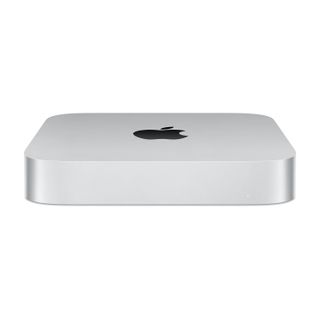
The Apple Mac mini with M2 Pro excels as a compact and powerful machine ideal for video editing and creative work, offering impressive performance with 8K movie editing capabilities.

The Velocity Micro Raptor Z95, a gaming PC with the essence of a budget workstation, excels in video editing with top-tier components and custom factory testing and overclocking without extra fees, balancing high performance and cost.
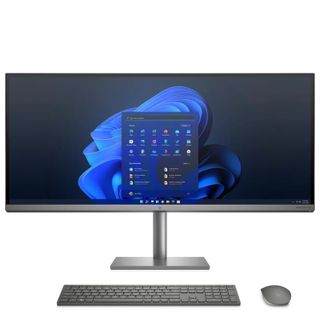
The HP Envy 34 emerges as an excellent all-in-one computer for video editing, offering a compelling alternative to the iMac. Despite using a last-gen Intel chip and mobile GPU, it excels in performance and features upgradeability, value for money, and generous port selection.

Apple equipped its latest Mac Pro with its own powerful M2 Ultra CPU, making it one of the most potent and future-proof video editing workstations available. Retaining its iconic cheese grater design for optimal cooling, it stands as a video professional's dream, albeit with a high price tag.
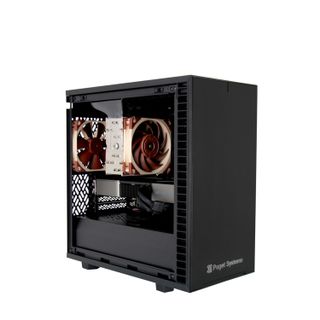
Puget Systems offers highly customizable workstations, presenting the strongest competition to the Mac Pro for professional video editing. With options for AMD Ryzen or Threadripper CPUs, Intel Core or Xeon CPUs, and Nvidia GeForce or Ada GPUs, it allows for tailored builds to fit any need, ranging from affordable to premium pricing.
Best video editing PCs: FAQs
What is the best computer for editing videos?
The best video editing computers are those equipped with enough CPU, RAM, and GPU to smoothly run video editing software. Creators tend to opt for Apple devices like the M2-powered Mac mini, which offers a near-flawless performance throughout the post-production process. For Windows machines, we like the HP Omen 30L and the Velocity Micro Raptor Z95. If you're looking for the best mini PC for editing videos, and don't want a macOS machine, check out the Minisforum Neptune HX99G.
Can a gaming PC be used for video editing?
Yes, the best gaming PCs can be used for video editing in general. They usually have the sort of components that needed for demanding video editing applications. A fast CPU, a powerful GPU, plenty of RAM and a speedy SSD. However there's a few of things to bear in mind:
1. It will depend on your software. You can't use a gaming PC for Final Cut Pro or iMovie as these run exclusively on Mac.
2. After sales conundrum. Gaming PCs do not usually come with any business-class level of aftersales that a video editing professional may expect which is, at a minimum, next-business day, onsite warranty.
3. ISV Certification. No gaming PCs have so called ISV certification. This ensures that your hardware solution is 100% compatible with the video editing software it will run on. Such certification, while not essential, is a sign that the application has been optimized.
4. Business features. Gaming PCs do not - as a rule of thumb - come with workstation/business features such as RAID (for data protection), ECC, vPro (for management), security features etc.
How to choose the best video editing PC

When looking for the video editing computer best for you, there are a few key areas to explore. First, decide whether you want a Windows or Mac system. Macs tend to be favored across the industry, and are priced accordingly.
In recent years, the best business laptops and the best mini PCs have become more popular thanks to advances in mobile graphics and display technologies, but they cannot compare to a standard desktop computer with regards to expandability and upgradeability. If you're looking for a portable model to edit videos on the go, these are worth exploring.
Most video editing software, including the best alternatives to Premiere Pro, depends on the best CPU; multiple cores and with powerful graphics are necessary to edit effectively. Video editing apps are also heavyweight in terms of best RAM usage, so the more the better.
Consider whether you need to also run other post-production tools like VFX software and best 3D modeling software. These are often need the best GPU with decent specs, which in turn affects your budget.
The operating system should have a solid-state drive (SSD) so the operating system and applications load and run quickly. Since speedy USB 3.2 ports are ubiquitous, using an external disk for final work storage is no longer as much of a pain as it once was. This has widened the options from the best workstations for full-size desk-space to compact offerings with fewer internal storage bays. If your editing needs are simple, the best video editing apps and the best video makers out there let you cut content on your phone and in your browser, without the need for a high-end machine.
For more advice, see our guide on the 5 things to consider when selecting a video editing PC
How we test the best video editing computers
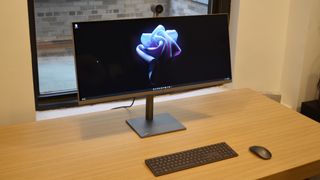
We've tested a massive range of desktop computers and laptops for creatives, including the the best video editing Macs, the best photo editing PCs and the best video editing monitors. So we know what to look for when you're looking to cut professional videos in the home, office, and studio.
To work with heavyweight video editors like Adobe Premiere Pro you will need 16GB of RAM to plod away comfortably, although technically it can run with just eight. A fast discrete GPU -if available- will also help as once you get past simple chopping of footage and start involving transitions, overlays and other fancy effects. Premiere Pro and DaVinci Resolve are optimised to offload encoding from the main CPU to the video card´s GPU.
Large amounts of storage is essential. It's not enough to rely on even the best cloud storage. And fast storage is just as important. Luckily, most systems nowadays come with SSDs to quickly load the operating system and applications. Having a secondary, old-fashioned spinning disc hard disk drive (HDD) as a secondary storage medium for your final work exports is a huge bonus, so we focused on systems that either come with 1TB or more of secondary storage or which can be easily expanded with additional HDDs internally.
We present you options from a wide range of prices. If you are on a budget, a good rule of thumb is to keep the internal storage modest and get the largest and best external HDD or the best flash drive you can. For added storage, especially when editing videos professionally, looked into investing in one of the best NAS devices for local backup purposes, ideally with RAID for data redundancy and disaster recovery.
Given the requirements, we selected systems with 16 gigabytes of RAM and fast 8-core processors like Intel´s i9, and AMD´s Ryzen 9 when available in each given device’s form factor. Future expandability and upgradeability was also considered as a bonus.
The best video editing PC: Our top picks
The best video editing PC in 2024
Why you can trust TechRadar
Below you'll find full write-ups for each of the best video editing PC picks on our list. We've tested each one extensively, so you can be sure that our recommendations can be trusted.
The best video editing PC overall
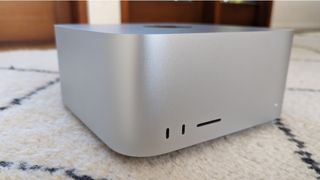
Specifications
Reasons to buy
Reasons to avoid
An easy pick for best video editing desktop PC, think of the Apple Mac Studio as a hyper-charged Mac mini for creatives. The compact computer has plenty of power for running your video editing software, with a choice of M2 Max or M2 Ultra chips.
In our in-depth review of the previous edition, we called the Mac Studio “a fantastic addition to the Mac family. Its laser-like focus on creative professionals means it won’t be for everyone, but if you’re after a powerful and compact creative workstation, you’ll love this.”
Expect speeds here - Apple claims the device is 50% faster than the prvious generation Mac Studio and an incredible 4x faster than the top-end last Intel-based iMac.
You can edit high-resolution on the fly, without performance issues. That leads to a big boost in workflow efficiency, since editors won’t have to load or render before preview, then re-render after any further changes are made. The high performance may be too much for some, especially when just starting out. But for complex creative workloads, especially involving 8K footage or 3D modeling, this is easily the best Mac computer for video editing.
Read our full Apple Mac Studio (2022) review
The best budget video editing PC

Specifications
Reasons to buy
Reasons to avoid
The Apple Mac mini isn't just one of the best Macs for video editing - it's one of the best overall. The slimline design makes it a good fit for home, office, or studio, while the small size means it doesn’t produce too much heat, leading to a pleasingly silent computer. Although not upgradeable, it’s a powerful little machine, especially if you opt for the M2 Pro version - even the base model will turn heads with its affordable price and solid power.
The M2 Pro comes in two flavors, with a 10-core CPU / 16-core GPU version (with six performance and four efficiency cores) and a 12-core CPU / 19-core GPU version (with eight performance cores/four efficiency cores). This makes it a great choice for creative work - when we reviewed the Mac mini (M2), we tried editing 8K movies and running projects in Ableton Live. Even under intense graphical and computational loads, the machine never faltered.
Read our full Apple Mac mini review
The best video editing Windows PC
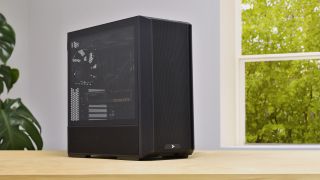
Specifications
Reasons to buy
Reasons to avoid
The Velocity Micro Raptor Z95 stands out as a high-performing computer for video editing, cleverly disguised as a gaming PC. This custom-built machine comes loaded with the latest high-end components, offering the power and reliability of a budget workstation while providing options for professional upgrades. Velocity Micro takes pride in their work, offering extensive custom testing and professional overclocking of your video card and processor at no extra charge. This ensures peak performance without the hassle and risk of manual BIOS tweaks.
This service is a boon for those unfamiliar with the intricacies of PC hardware—saving hours of potential frustration and ensuring your investment in a high-quality editing workstation doesn't go to waste due to a misconfigured setting. Starting at $2,509 and capping at around $8,000, the Raptor Z95 delivers workstation-level performance without breaking the bank. While it might not pack the absolute pinnacle of workstation hardware like AMD Threadripper processors or Nvidia Ada GPUs, it provides a solid foundation for professional video editing, 3D modeling, and more, making it an ideal choice for professionals seeking robust performance without the exorbitant cost of top-tier custom builds.
Read our full Velocity Micro Raptor Z95 review
The best video editing alternative to the iMac
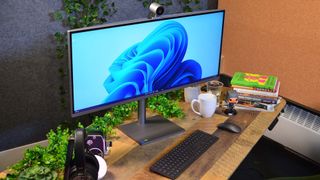
Specifications
Reasons to buy
Reasons to avoid
The HP Envy 34 is a stellar computer for video editing - and a fantastic all-in-one alternative to iMac.
Running a last-generation Intel chip and a mobile GPU means it’s not quite as powerful as a tower like the Velocity Micro Raptor Z95. But don’t let that put you off - the Envy 34 is one of the best all-in-one PCs for editing video. Conducting a series of benchmark tests, we found the device performed strongly in video and photo editing, even beating out the famously fast iMac at times.
When we reviewed the machine, we called it a better option than an Apple devide, especially for content creators and video editors who aren't (or don't wish to be) locked into the Apple ecosystem. This is especially true for content creators looking for better value for money, since you can upgrade storage and memory, while getting double the number of ports found on Apple’s prestigious video editing computer.
Read our full HP Envy 34 review
The best video editing computer for professionals

Specifications
Reasons to buy
Reasons to avoid
One of the biggest complaints about the previous Mac Pro model was that it was still Intel-based when all other Apple computers had moved to its acclaimed in-house CPU range. Thankfully, Apple listened, making the Apple Mac Pro one of its most powerful computers yet – and highly so.
As one of the best video editing workstations currently on the market, this isn’t just extremely powerful. It’s also future-proof, which is only right since you’re spending good money for it.
Apple is keeping that cheese grater look that we’ve come to love since its unveiling, especially since it’s fitted with a unique cooling system to maximize airflow and keep the noise down.
That’s not all; one look at its specs, and you’ll see that this is a video professional’s ultimate tool. Just be prepared to feel broke after that trip to the Apple Store.
Read our full Apple Mac Pro review
The best custom-built video editing PC

Specifications
Reasons to buy
Reasons to avoid
If none of the other PCs on this list suit your needs, then you need to give Puget Systems a call. A custom workstation builder, there is no one Puget System PC, but its systems are incredibly customizable and offer the Mac Pro its strongest competition of any Windows/Linux desktop when it comes to professional video editing.
Configurable with AMD Ryzen or Threadripper CPUs, or Intel Core or Xeon processors, you can truly sculpt a perfect video editing PC that exactly suits your needs, whether its a massive pool of memory or an Nvidia GeForce RTX 4090 for heavy-duty 8K encoding with GPU-acceleration.
Prices range from affordable to eye-wateringly high, but as far as a Windows alternative to the venerable Mac Pro, a Puget Systems custom build is it.
Read the full Puget System Workstation review
Best video editing PCs: Expert advice
How do you choose a video editing or rendering computer?
We put this question to James Higuchi, Lighting Supervisor at Monsters Aliens Robots Zombies (MARZ), a Toronto-based VFX studio.
Nearly every machine for use in production requires its own specifications to meet the needs of the artist using it. For example, editorial requires fast I/O, lots of RAM and now that most editing suites are making use of some form of GPU acceleration, having a decent GPU can go a long way. Lastly, high clock speed CPUs are a must to help keep encoding/transcoding times down. Typically you're going for clocks over cores in this situation.
Rendering is not too dissimilar depending on what application you're rendering in. CPU-based rendering requires as much processing power and RAM as you can fit into a single chassis. Obviously, there is a level of diminishing returns, but I don't think I've ever heard "it has too much RAM."
On the other hand, GPU rendering is dependent almost solely on the specs of the GPU/GPUs in the system and relies on CPU for specific processes (texture processing, compression, I/O, etc). Another consideration for rendering, regardless of the processing unit, is parallelity. Since render processes are typically broken down to a per frame basis, the more frames you can have processing at one time, the better.
So typically we're looking at setups with more cores, more GPUs and more machines in general. At the end of the day, the biggest consideration is cost effectiveness. You could throw $50,000 into a machine that can do everything, but that’s just not practical or cost effective.
We typically try to tailor the machine for the task - balancing a mixture of processors (CPU and GPU), RAM, I/O, scratch and static storage depending on the need. This allows us to target the hardware in a more efficient manner and have a more straightforward hardware-upgrade path. It also keeps driver/software overlaps to a minimum, as there are cases in which some driver/firm compatibility conflicts can prevent you from running some processes on the same box.
What are the different types of workstations?
TechRadarPro Q&A with Anu Herranen, Director of New Product Introduction, Advanced Compute and Solutions at HP Inc.
There are two main categories of workstation: desktop workstations, and mobile workstations. Within both, there will be different levels of performance which is defined by each manufacturer. Mobile workstations typically come in the form of a laptop and are designed for users who need flexibility to work from the office, home or in the field. As the name suggests, desktop workstations are a computer tower on or under a desk, requiring a separate monitor, keyboard and mouse. Although extremely powerful in performance, they aren’t portable like a mobile workstation.
There is a third category that people might be less familiar with, and that is the centralized workstation. If you have a team of people, but not all need access to high performance computer power all the time, this can be a very cost-effective option. Say you have a team of 30 people, of which 10 need constant access to workstation performance, you would give them their own workstation. For the other 20, who need it occasionally, you can install a centralized workstation in your office. These are usually stored in IT rooms, rather than sitting on the end user’s desk.
This is a rack-mounted desktop workstation that can take care of intensive workflows for any user, anywhere. Centralized workstations are also known as virtual workstations, as team members can connect to the centralized workstation with their standard issue desktop, laptop or notebook using the appropriate software, whenever they need to access high-performance computer power.
The user can then access workstation power performance to complete compute-intensive tasks from anywhere. The centralized or virtual workstation takes care of the heavy lifting, allowing the user to get the job done on almost any device from anywhere. Usually, only the encrypted pixels are sent over the network, so company data remains highly secure at the source with the racked centralized workstations.
During the pandemic as a result of increased virtual collaboration, users who relied on high performance computing via a desktop workstation needed a solution that provided the same capabilities and experience they were used to having in the office, at home. In the future, this is likely to be a continuing trend as workforces spend more time working remotely.
Today's best deals on video editing PCs
Are you a pro? Subscribe to our newsletter
Sign up to the TechRadar Pro newsletter to get all the top news, opinion, features and guidance your business needs to succeed!

Steve is TechRadar Pro’s B2B Editor for Creative & Hardware. He explores the apps and devices for individuals and organizations that thrive on design and innovation. A former journalist at Web User magazine, he's covered software and hardware news, reviews, features, and guides. He's previously worked on content for Microsoft, Sony, and countless SaaS & product design firms. Once upon a time, he wrote commercials and movie trailers. Relentless champion of the Oxford comma.
- Lewis MaddisonStaff Writer
- John LoefflerComponents Editor
- Collin Probst

An incredible $100 billion bet to get rid of Nvidia dependence — tech experts reckon Microsoft will build a million-server strong data center that will primarily use critical inhouse components

HP launched a very promising ultra portable XPS13 killer laptop — the 1kg EliteBook 635 Aero G11 is only available in Japan with seemingly no plans for a global launch, but why?